The world championship visits its original street circuit this weekend for the sixth race of 2018. The Monaco Grand Prix is the third race of the year to take place on a temporary track, and more could follow in the 2019 F1 season as Liberty Media is actively courting Miami.
But with a host of similar street tracks under consideration for future races F1 risks failing to establish itself in new venues. @DieterRencken analyses the danger of turning away from permanent circuits.
“Olympic legacy is the result of a vision. It encompasses all the tangible and intangible long-term benefits initiated or accelerated by the hosting of the Olympic Games/sport events for people, cities/territories and the Olympic Movement”- definition of the Olympic Legacy as outlined in IOC guidelines.In assessing bids from prospective host cities, International Olympic Committee evaluates the legacy the Games would leave long after athletes have departed and life returns to normal for citizens, many of whose lives would have been disrupted for considerable periods. A similar process is followed by FIFA in awarding the World Cup to a country/region. The IOC’s seven primary evaluation elements are:
Organised sports development
Economic value and brand equity
Social development through sport
Human skills, networks, and innovation
Culture and creative development
Environment enhancement
Urban development
Formula 1 – now under the aegis of Liberty Media, owner of Formula One Management – prides itself on being up there with these global sporting spectacles and, in the eyes of some, above them on account of its continuous sporting block. Yet when it comes to evaluating prospective grands prix F1 seemingly concerns itself with just two elements: How much money it is able to squeeze out of prospective promoters, and how quickly.
Where permanent circuits are concerned, legacy programmes should be simple to implement: the circuits exist, therefore club and national motorsport events naturally follow suit, and track days and advanced driver courses are organised. In time, other sporting genres such as cycling and jogging – plus golf in some instances – invariably follows suit, as do music festivals and other large-crowd events.
Would national racing exist in Malaysia without the Sepang circuit? Ditto China with Shanghai’s mammoth facility, or India without the ill-fated Buddh Circuit? Probably yes, but there is no doubt that the venues left lasting impressions on hordes of youngsters, enthralled by the sights of grand prix cars racing on their “soil”; inspired by racing on the same patch of Tarmac as Michael Schumacher, Lewis Hamilton, and others.
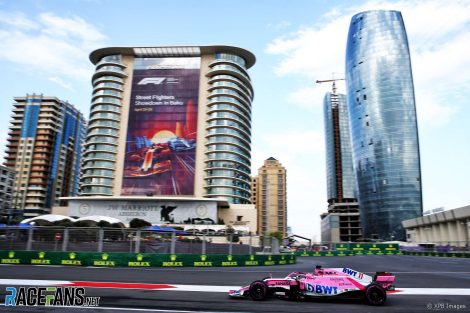
Baku provides a perfect example: After one weekend per year, indulged in for not less than $100m per event for the benefit of 30,000 live punters and a TV audience, motorsport is all but forgotten in a country whose fortune rests largely on fossil fuels.
Thus F1’s sudden stampede to woo street circuits raises serious questions about the sport’s legacy in the hands of Liberty Media, particularly where minimal existing motorsport facilities currently exist, to wit a country such as Vietnam.
True in Germany, where there is talk of a street grand prix in Berlin, numerous permanent circuits exist, although a case could certainly be made that the money could be better spent on improving Hockenheim or, indeed, reducing hosting fees. As revealed here last week, F1 is likely to lose both venues unless the German Grand Prix is sustainable in the long run. Sustainability forms part of the IOC’s legacy programme.
Take Copenhagen: Denmark currently has one permanent circuit, the 2.3-kilometre Jyllandsringen, situated approximately three hours west of the capital – whether by road or ferry. Rather than construct a new, F1-compliant circuit on the outskirts of Copenhagen, the city’s fathers are discussing a street course in order to cash in on the appeal of Kevin Magnussen. When the Dane eventually retires, what then? All gone…
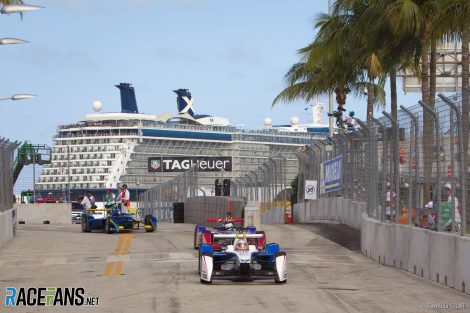
That adds three street races to the current roster, which already includes Melbourne, Baku, Monaco, Montreal, Singapore and Sochi, all held on non-permanent circuits, so nine in total (and counting). With the calendar seemingly stabilizing at 21-22 races in the foreseeable future, that would represent over 40 per cent of grands prix held on street circuits – well up from the 28 per cent.
Twenty years ago, before F1 struck its commercial rights deal and thus exchanged sustainability for its 100-year deal with Bernie Ecclestone for a meagre $300m, the street race complement was three – Melbourne, Monaco, and Montreal – in 16 races, or 18 per cent. Spot the trend? That trend is extremely disconcerting.
Fallacy one is that street circuits are cheaper to promote than grands prix on permanent circuits. Only the naïve have been duped to believe on the basis that the tarmac already exists. For proof look no further than Baku (see above); for substantiation check out the 2017 annual report (PDF link) tabled by the Australian Grand Prix Corporation, which routinely loses AU$60m (£35m) annually per event, and last time $100m all in and has nothing to show for it come the Monday after the event…
By contrast, Silverstone and Hockenheim just about break even, and commence track day activities the day after. However, let’s stay with Australia: Sydney’s 2000 Olympic Stadium is currently being upgraded to accommodate both rugby codes and cricket in addition to field and track activities, and will seat 75,000 under a retractable roof. That is the Olympic legacy.
Fallacy two is that street circuits offer better racing. Baku’s bumper-bashing bonanzas aside, its inaugural event was soporific in the extreme, matched in the boredom stakes by all editions of Valencia’s (thankfully) now-defunct race, and the sort of stuff served up by the Caesars Palace (Parking Lot) Grand Prix and, yes, Monaco on a dry Sunday.
Fallacy three is that street circuits attract bigger crowds and are more popular. Last time I looked Monaco battled to pull 45,000 spectators despite its allure, while Silverstone was filled to the rafters (120,000-plus) despite being situated well over two hours from London (in race day traffic). Baku and Sochi regularly have sparse stands, while in Valencia most fans seemed to be acquainted with each other, while Singapore has yet to sell out…
Advert | Become a RaceFans supporter and
Of course, there are exceptions, but the fact of the matter is that street circuits generally accommodate fewer fans, while viewing tends to be an issue, whereas permanent circuits offer wider vistas. Equally, for city inhabitants, street events are an absolute bane unless individuals are F1 fans, with traffic and businesses being disrupted, often for weeks/months on end. That is no legacy.
Fallacy four is that street circuits are sustainable: Look no further than Formula E for proof. In its first season the nascent electric racing category, which planned to race in inner cities, listed 10 venues for its 11 races. These were: Beijing, Putra Jaya, Punta del Este, Buenos Aires, Miami, Long Beach, Monaco, Berlin, Moscow and a double-header in London.
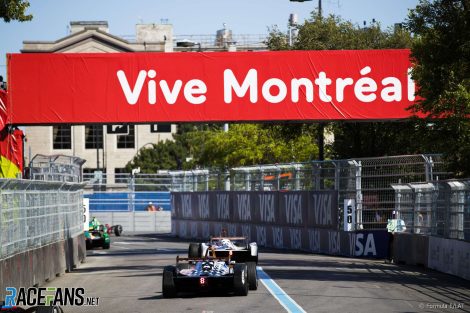
Over the past four seasons, the series has visited around 15 circuits in its quest for a 10-venue calendar and had unsuccessful dalliances with Montreal, Brussels, and Moscow. Montreal illustrates the risk of street races particularly well: The original contract was approved by then-mayor Denis Coderre, who subsequently failed to secure a second mandate. His successor Valérie Plante immediately cancelled the race.
The event was widely criticized for its use of public funds and for its location in downtown Montreal, where it forced closure of city streets for a 2.75-km circuit catering for 250 bhp cars. Imagine the disruption and noise created by the construction of a full-length circuit complying with F1 safety standards. In the event, Montreal’s Formula E race attracted 45,000 spectators, of which over half were ‘freebies’.
FIA President Jean Todt put it succinctly during a recent media briefing. “We must simply understand how difficult it is to hold a race in a city. At the end of the day you have potentially a hundred cities that could host, who are willing to host, and then you have to select from 10 to 15. And at the moment we have the best cities hosting a Formula E race,” he said.
“Switzerland did not organise one race since ’55, since the tragic accident at Le Mans. They are so attracted with Formula E that they decided [to promote a race in Zürich]. But saying that, it’s sometimes very much linked to political situations, The mayor is deciding, you will have always the greens who are unhappy. So it makes it difficult.”
If it is “difficult” for Formula E to strike deals with cities despite its environmentally “green” image, silent cars, NextGen appeal and single-day formats, imagine the challenges facing F1 given its higher speeds, noisier cars, four-day programmes and ‘Excess’-All-Areas image.
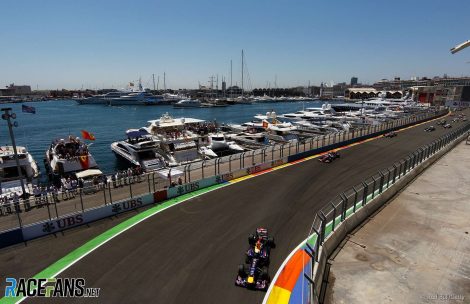
However, as outlined previously, the Circuit de Catalunya’s contract expires after next year’s race, with the owners, a consortium that includes the local government administration, the promoters are currently in negotiations to extend the deal.
Rumours of an F1 street race in Madrid are gathering pace, primarily due to the Catalan crisis: where until recently the region was largely autonomous, since its ill-fated declaration of independence it falls squarely under the aegis of Madrid.
Advert | Become a RaceFans supporter and
So will F1 eventually decamp to Madrid? Already the mayor of Madrid, a committed socialist, has unveiled plans to ban cars from the city’s Gran Via – and diesel vehicles from the city centre – so is unlikely to enthusiastically embrace F1, particularly as her political ticket was the eradication of corruption, a dark cloud under which F1 still labours in political circles after recent scandals.
That said, let us play Devil’s Advocate: Liberty agrees terms with Madrid for a street race. The mayor is in favour and convinces the council: the deal is for five years. The lack of a grand prix at Circuit de Catalunya sees the circuit fall into a state of disrepair, and thus the circuit loses its F1 testing license – but continues with MotoGP, which is profitable on account of lower fees and larger crowds.
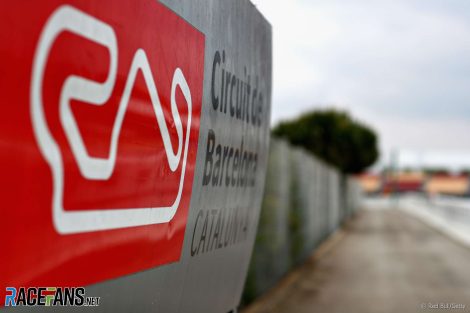
For precedents, look no further than Valencia, which blew tens of millions on its street race despite having an F1-compliant circuit within its borders, the ill-fated Mokpo (semi) street circuit in Korea, and Montreal’s Formula E event. Indeed, look at New Jersey, which thudded to a sudden halt despite having a calendar slot.
Now, though, F1 is punting Miami. Let us assume the city council grants approves the event, which is by no means a foregone conclusion given the antipathy of resident groups in areas through which the proposed layout threads. At this stage permission to negotiate with F1 has been granted to the city executive, no more – yet already changes have been forced upon the promoters’ planned track due to local political pressures.
The financial model – a risk-sharing deal between Formula One Management, promoter, and council – sets a precedent which other promoters would give their left arms to emulate, but is it sustainable? Above all, what legacy will the race leave, whether after one year, five years or ten? There are numerous circuits across the USA that could readily host a grand prix with few, if any, upgrades – so why F1’s fetish with street races?
Surely F1’s would be better served by its commercial rights holder if Liberty concentrated on ensuring the sustainability of its existing circuit base rather than taking the lead from Formula E on street races. Does Liberty wish to be remembered as the company that took F1’s money and ran, or as an ethical organisation that created a lasting legacy for the sport?
Follow Dieter on Twitter: @RacingLines
Go ad-free for just £1 per month
>> Find out more and sign up
RacingLines
- The year of sprints, ‘the show’ – and rising stock: A political review of the 2021 F1 season
- The problems of perception the FIA must address after the Abu Dhabi row
- Why the budget cap could be F1’s next battleground between Mercedes and Red Bull
- Todt defied expectations as president – now he plans to “disappear” from FIA
- Sir Frank Williams: A personal appreciation of a true racer




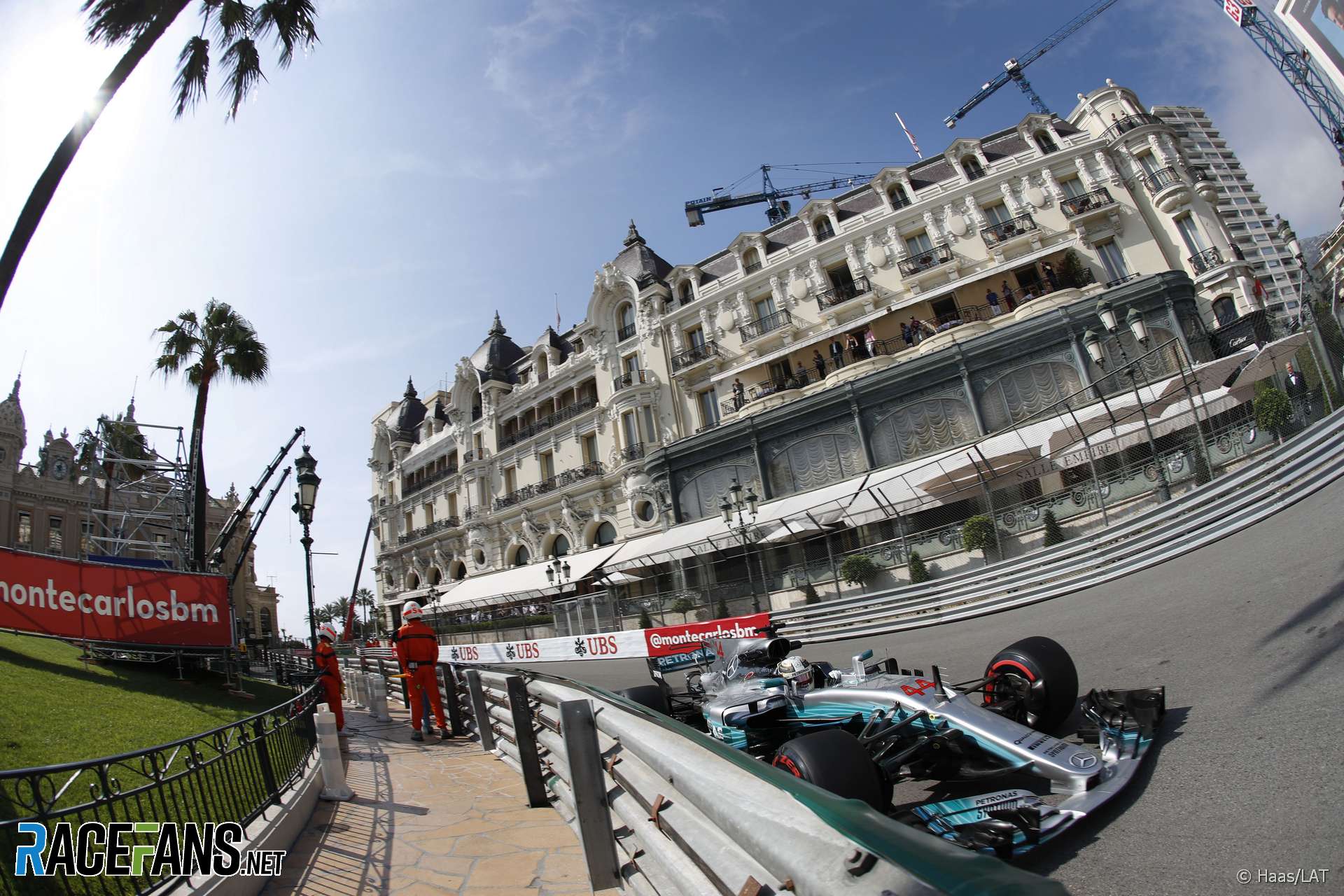
Nitzo (@webtel)
23rd May 2018, 12:49
Truly the bottom line and perhaps the most difficult question for Liberty to answer.
johnny Five
23rd May 2018, 13:14
If you were planning the “taking the money and running” route, you’d probably prefer not to be remembered at all.
Strontium (@strontium)
23rd May 2018, 14:21
I’m sure they don’t care how they’re remembered, as long as they get profit
Victorinox
23rd May 2018, 16:40
You mean like Bernie? People forget that his scheme was little more than cash grabbing all over the world, at the expense of classic F1 venues. Under his watch no more French GP, no more German GP, while leaving a trail of broken promises in India, Turkey, Indianapolis, etc.
Invisiblekid
24th May 2018, 0:04
This.
So this.
Jere (@jerejj)
23rd May 2018, 13:00
”where there is talk of a street grand prix in Berlin,”
”there is/has been talk of street races in Miami, Madrid, Cape Town, Beijing, Seoul and on the Chinese island of Hainan.”
– Wrong for everything except for Miami, i.e., Yes, there’s been talks of Miami concerning a possible future F1 race, but nothing concerning the other cities mentioned within these paragraphs, so I’m not sure where you’ve come up with these, LOL. There’s been absolutely zero reports/news or mentions, etc., about the other cities mentioned in these parts of the article not only on this site but other F1 news-focused sites as well. Furthermore, Circuit Gilles Villeneuve and Sochi Autodrom can’t really be regarded as temporary circuits/street circuits in the same sense as Albert Park, Baku, Monaco, and Singapore especially the latter as it isn’t used for the regular everyday traffic when F1 isn’t in town. Even the Canadian GP venue although it can be used for driving by the public, isn’t really used for the everyday traffic like the Albert Park, Baku, Monaco, and Singapore venues.
Dieter Rencken (@dieterrencken)
23rd May 2018, 14:17
All I’ll say to this is that I keep an ear to the ground in the F1 paddock, and if you do a search with F1 and those cities as key words, you’ll be surprised to see what comes up. Sean Bratches is on record that they’ve had over “40 expressions of interest” – I can assure you they weren’t from the likes of Snetterton.
Jere (@jerejj)
23rd May 2018, 18:34
@dieterrencken OK. BTW, I did search with the words ‘F1’ and one of those cities together each one at a time, and I didn’t really find anything concerning a potential future race for any of those cities except for Cape Town, but that’s from a time before LM had become the commercial rights holders. My original comment wasn’t meant to be an insult or anything, but I just got a little confused due to how many cities are mentioned here that haven’t really been reported about concerning a potential future race anywhere.
anon
23rd May 2018, 19:08
@dieterrencken, I was wondering whether it would be possible for you to clarify a few of the points in your article, if it is OK with you.
With regards to the attendance figures for Monaco – as I understand it, whilst the track itself only has a limited number of grandstand seats, I was under the impression that there were a large number of fans who tended to watch the race from the cliffs overlooking the venue and therefore don’t show up in the grandstand ticket sales (according to this article, the official attendance figure for Monaco was meant to be 200,000 – now, even if they are, as if often common, counting a single person coming to the practise, qualifying and race as three separate visits, it would still suggest that there are a reasonably large number of people who aren’t coming under the grandstand seating numbers https://www.formula1.com/en/latest/headlines/2017/12/f1-spectator-figures-for-2017-hit-four-million.html ).
As for Singapore, whilst you comment about the venue not selling out, there are two questions which are not answered – firstly, what is the capacity of the circuit, and secondly, if the venue is not selling out, what proportion of the tickets are typically being sold on average? If the circuit capacity is quite large and you are still selling a significant proportion of the seats (say, 85%), then you might still have an event that is pretty successful overall.
In the past, I believe that the organisers have claimed that the circuit has a capacity of 100,000, and in 2017 they claimed a total attendance of 260,000 for the race weekend – now, if you assume for convenience that the majority of those people would have been there over all three days, that suggests around 87,000 people attending per day, or 87% of the capacity being used.
Now, if those figures are reliable then, whilst the circuit has not sold out, that is still a substantial crowd – in fact, it would make Singapore one of the more successful venues on the calendar, beating out a lot of permanent circuits (such as Monza, with just 185,000 for the race weekend, or the US GP, which reported a three day turnout of 258,000). Without knowing the wider context, what may at an initial glance seem like a poor statistic – a failure to sell out – looks rather different when you consider the overall turnout figures and the relative performance against a number of circuits, permanent or otherwise.
Also, with regards to the statistics on the proportion of permanent and non-permanent venues, isn’t there an argument that you are being rather selective with the years that you have chosen? You refer to the current calendar, and then look back twenty years to the 1998 calendar, but equally you could have gone back thirty years to 1988 and pointed out that, in that year, 25% of the calendar was made up of street venues (Monaco, Montreal, Detroit and Adelaide).
In fact, if you go back to the early 1990’s and the whole of the 1980’s, quite a few years had at least 25% of the races comprise of street venues – 1991, 1990, 1989, 1988, 1986, 1985, 1984 (where you even had four street races back to back – Monaco, Montreal, Detroit and Dallas), 1983, 1982 and 1981 all had at least four street races out of sixteen being street races. 1982, in fact, had five street races (Long Beach, Monaco, Montreal, Detroit and Las Vegas) out of sixteen races, making 31% of the races street circuits – a higher percentage than today.
By historical standards, having 28% of the calendar being street races is about what you might expect when compared to the 1980’s and early 1990’s. If anything, the figure from 1998 is perhaps unusual in that it is lower than you might have expected from historical trends before then, rather than the current situation being the odd one out.
Dieter Rencken (@dieterrencken)
25th May 2018, 13:50
I think the major consideration is that street circuits usually have only temporary grandstands, so the capacity is the number of seats provided. To put an actual percentage to it is difficult – promoters calculations are based on the number of tickets they need to sell to hit break-even versus the number of seats sold / provided, and what the health and safety people will permit. Even then they add up to 20% for political purposes…
While you may believe 87% capacity to be acceptable, the high initial and subsequent overhead cost structures of street grands prix means the final 10% provides the difference between loss and profit. Talking to a promoter in Spain, he said that on a 90k race day crowd at his circuit it’s a disaster, at 100k they break even and at 110k they make big money.
Another factor is that promoters who also stage concerts double count, as this press release from Baku proves:
Baku City Circuit today announced that 94,000 Formula 1 fans attended the racing action and nightly concerts at the FORMULA 1 2018 AZERBAIJAN GRAND PRIX in Baku over the course of 4 days at the third successive street race to be hosted in the Azerbaijani capital.
This figure represents a 31% increase in attendance – and a 21% increase in ticket sales – from last year’s unforgettable race on F1’s fastest street circuit. In a sign of the event’s growing popularity in the sport’s newest market, local sales accounted for 77% of all tickets sold this year.
That pans out at less than 24000 average per day for race, including THREE major headline concerts…
I’m pleased you mention all those US street circuits from the eighties and nineties – where are they today?
Alex De (@alexde)
23rd May 2018, 14:44
“Wrong for everything except for Miami, i.e., Yes, there’s been talks of Miami concerning a possible future F1 race, but nothing concerning the other cities mentioned within these paragraphs, so I’m not sure where you’ve come up with these, LOL.”
I think you are wrong (or I don’t get you). There has been talks with the mentioned cities..
Jere (@jerejj)
23rd May 2018, 18:21
@alexde Not as far as reporting goes as nothing’s been reported about those cities concerning a possible future race here nor on any other F1-related website that I use on a regular daily basis. Most recently, there’s only being the reports about the potential Miami race, and then the likes of Vietnam, Denmark, etc., a little further back in time.
Silfen (@silfen)
23rd May 2018, 19:50
@jerejj: Apparently you don’t read all the good websites, because I have heard about a possible race in Berlin at the Tempelhof airport on various sites. Both English and Dutch. And about some of the others (though not all), like Beijing and Seoul.
Silfen (@silfen)
23rd May 2018, 19:54
Oh, and German F1 websites as well. Just read about it on SpeedWeek.com
Jere (@jerejj)
24th May 2018, 11:11
@silfen – Tempelhof Airport is where the FE race last weekend took (takes) place, though. Furthermore, yes, I don’t read all the websites on a regular basis, only this one and Motorsport.com. Additionally, I also relatively often read a site called F1i.fr (In English, of course, as it’s an option alongside French on that site). I couldn’t use the German sites like SpeedWeek.com that you suggested nor the Dutch sites as I don’t speak the languages even though I can understand both to a certain extent, LOL.
@alexde – Yeah, but just not on the particular ‘public domains’ that I follow.
Alex De (@alexde)
23rd May 2018, 20:17
You can use Internet search engines if you don’t follow F1 business news. Liberty has had a lot of negotiations. Many of them has been reported on public domains.
pastaman (@)
23rd May 2018, 13:17
Preach on, Dieter! #NoMoreStreetCircuits
Steven Robertson (@emu55)
23rd May 2018, 13:45
A temporary street circuit in a city should be a one off, that’s the novelty. F1 could have 3 calendar slots for street races that rotate around the world every season. Keeps the calendar fresh and has a broader reach for fan engagement.
Phylyp (@phylyp)
23rd May 2018, 14:20
A huge +1 to this @emu55
Mark Zastrow (@markzastrow)
23rd May 2018, 16:33
Sounds lovely, but is that feasible? Street races need long-term contracts to recoup their investment and often to learn from their logistical mistakes, just like permanent circuits. It’s a massive undertaking to do it, and I’m not sure any city would find a single race worth it.
graham228221 (@graham228221)
23rd May 2018, 18:28
Feasible perhaps if F1 and the FIA lower their safety requirements to Indycar standards?
You look at a circuit like Baku and it’s smoother than most older, permanent circuits – it’s only the barriers around the track that make it even seem like a street circuit.
Valencia and Sochi seem to be, at best, nominally “street” circuits as I can’t imagine they actually used as roads.
It would be interesting to see a comparison between F1 street races and Indycar events like Long Beach, Toronto and Detroit in terms of cost because I bet it’s a world of difference. Not to mention the racing is a ton better on the brutal Indycar street tracks (apart from Long Beach).
Gary
23rd May 2018, 14:01
Liberty has to earn $800 million of after-tax operating profit to cover its cost of capital before it can begin to think about making the sport more “sustainable” or more economically compatible with its fan base.
This is the fundamental problem of the sport being owned by an enterprise that has a huge financial investment ($8 billion) in the legacy of Bernie, CVC & Co. (goodwill and intangibles), but almost zero investment in actual assets that facilitate the sport.
NFL, Premier League, MLB, NBA, NHL, FOM/Liberty Media
Can anyone spot the one whose ownnership structure is different than that of the others?
Memo: Dieter, you are an awesome addition to this web site.
Jimmi Cynic (@jimmi-cynic)
24th May 2018, 0:15
+1. F1 is still paying Bernie and playing by Bernie’s bent game rules.
Gary
24th May 2018, 8:39
Yup, and that’s the part that very few understand as they don’t understand corporate finance and capital structure. If the $8 billion of invested capital was invested in assets that support delivery of the sport then it would be OK to divert + $800 million to cover the capital cost. But we aren’t, it’s intangible and goodwill, i.e. the capitalized value of future profits paid out to CVC and Bernie. Formula One can’t and won’t heal itself u til this capital structure is replaced with one that removes this burden of legacy. And that can only happen through restructuring or worse (bankruptcy). Mercedes, Ferrari and/or Red Bull quitting would be the best thing for the long term health of the sport. Force the present FOM capital structure into bankruptcy and then start over.
DaveW (@dmw)
23rd May 2018, 14:50
I’m not sure whether adding another street circuit is good of bad for F1 on the margin. But I do know that citing the IOC and FIFA for creating lasting value at venues from events is absurd. Both entities are fabulously corrupt, they award events on the basis of corruption, the construction of venues and facilities is based on corruption, and the resulting physical legacies are usually seen wreathed in weeds and crumbling.
SteveR
23rd May 2018, 15:27
DaveW, my exact thoughts while reading the article; you beat me to it. It certainly is a stretch to cite the World Cup as providing legacy, especially after the absolute corrupt mess left in Brazil in 2014. What a waste of money and resources. F1 is a profit driven business and that will define where it goes; just follow the money.
Jeffrey (@jeffreyj)
23rd May 2018, 15:55
Hear, hear. And let´s not forget that many residential area has been bulldozed away to make way for arena´s, leaving thousands without a roof above their head.
SteveR
23rd May 2018, 18:32
Here’s a site with photos of the ‘legacy’ the Olympics has left. Some ‘legacy’ indeed.
SteveR
23rd May 2018, 20:54
Oops. See above comment.
frood19 (@frood19)
23rd May 2018, 15:05
@dieterrencken I wonder what you would consider an optimal outcome re. new venues. there seem to be multiple downsides to many of the ‘new’ tracks of the past decade or so, but the success stories do not share a common set of features. for instance, singapore has established itself quite well, but the track leaves a lot to be desired (plus all the issues you mention about it being a street track). COTA is a pretty great track but it seems to be struggling to get a real toe hold in the American psyche (or at least that’s how it appears).
OllieJ (@olliej)
23rd May 2018, 15:27
Interesting insights
I have to stick up for Valencia’s 2012 race though, that was good (though it was still a terrible venue)
Jay Menon (@jaymenon10)
23rd May 2018, 16:23
great article @dieterrencken!
As someone who grew up in Malaysia, I cannot stress the importance Sepang had on the motor racing legacy locally. I myself grew up watching MotoGP as kid, due to the local interest in motorbikes, and with the a local round at the old Batu Tiga track, it was always in the media and races were shown on TV. When I was in school, kids talked about Mic Doohan being their hero. F1 wasn’t really on the radar.
In fact, F1 races were broadcast after a week’s delay in the early to mid 90s. When it was announced that Sepang was being built and that F1 was coming to Malaysia, there was a demonstrable increase in interest. There was more coverage about F1 in general, plus races were shown in a mix of live and delayed (typically 2 hours after the end of a GP) broadcasts. It certainly had an effect on me. By 1999, I was totally hooked.
Mark Zastrow (@markzastrow)
23rd May 2018, 16:50
@dieterrencken, what permanent US tracks do you have in mind that could host F1? I’m curious, because the conventional wisdom always holds that the crop of classic US tracks like Road America, Watkins Glen, and VIR are more or less incapable of being upgraded to F1 capacity or safety standards without sacrificing the quality of the tracks. But I sure would love to see F1 at any of those tracks…
SteveR
23rd May 2018, 18:40
Indycar and CART have raced at Road America and Mid Ohio and many other US tracks; why can’t F1? What’s so magical about the F1 standard? CART was awesome at Road America and the viewing is fantastic.
Mark Zastrow (@markzastrow)
24th May 2018, 5:21
@SteveR Well, I completely agree that if F1 would relax their standards, it would be a fantastic show! I just know that the amount of runoff, standard of paddock facilities, and crowd access are cited—and it’s true, that they fall short of the new permanent F1 circuits by those standards. Mid-Ohio is too small (people say), plus Road America is big but the track is extremely narrow by F1 standards (IndyCar heavily enforces anti-blocking rules that would be unorthodox for F1). You could certainly pave over the gravel traps and spectator areas at Road America, but then what are we left with?
ruliemaulana (@ruliemaulana)
23rd May 2018, 16:55
Maybe it’s time for us to embrace new and more affordable sports venue. The so called Olympic Legacy and World Cup exclusive venue had bring more economic and social problems in the long run than when the excitement happen for short period of time.
Niefer
23rd May 2018, 17:45
But things like that is exactly what reflects the values of Liberty Media: impeding women of working whatever they want and promoting “show” instead of founding racing roots – values of blunder.
Not only LM, but FIA as well: the march of “green” course, regulations and tracks that does not defy any skill at all.
No wonder why ppl talk about roborace.
rpaco
23rd May 2018, 19:01
I suppose we should be thankful that so far there are no oval tracks!
“Twenty years ago, before F1 struck its commercial rights deal and thus exchanged sustainability for its 100-year deal with Bernie Ecclestone for a meagre $300m,” Nice to see it quoted correctly for a change! If you had just added the word “lease” before “deal” it would have been perfect. In fact it was nearly cancelled when Bernie failed to make the first payment on time
Aleš Norský (@gpfacts)
23rd May 2018, 21:56
Leave the cities to Formula E. The question is whether Formula 1 needs 20+ race calendar…I would be just fine with 16-18 good tracks. OK, Monaco has the heritage and should stay. But for one, I would much rather see return of Istanbul Park than have Singapore. Of the street circuits of the past, some were a disgrace…Valencia, Phoenix, Detroit. Let’s bring back the old Österreichring instead!
Niefer
23rd May 2018, 23:47
Amen to that!
Old Österreichring + Restored Imola (Tamburello + Villeneuve with softwalls) would be bliss!
Heck, if they restored the full course of Interlagos and Monza, oh man! What a calendar that would be!
Ed
24th May 2018, 2:55
I think one company and one certain individual may well have an interest in that:)
anon
24th May 2018, 7:26
That might be the case right up until the fan base remembered why they weren’t keen on the old Imola layout in the first place, which was the fact that it produced fairly processional races.
Neil (@neilosjames)
23rd May 2018, 21:57
Plenty of love for this article… in my ideal world, an overwhelming majority of F1 races would be held on real circuits. I think it’s far more difficult, sometimes impossible, to truly appreciate the capabilities of an F1 car unless it’s on a proper circuit, designed for racing.
Four or five street/park per year is more than enough for me.
swh1386 (@swh1386)
24th May 2018, 1:11
Didn’t motorsport have its origins on temporary, road and street courses? City to city racing, Monaco, LeMans, Reims, Daytona Beach etc etc etc….
If formula one introduces another half dozen street circuits in the same ilk as Valencia or a Las Vegas car park then the sanctity of Monaco will not be tarnished, if they introduce street circuits the like of Singapore then Formula one will be all the better for it.
In any event, the culture of motor racing in any country is elitist, unattainable to the majority of the population and young talent pool, no coincidence the large majority of past and present formula one drivers are from motor racing dynasties, or wealthy backgrounds.
So define to me exactly just which aspects of formula one’s heritage and legacy are we aiming to protect here?!
Ed
24th May 2018, 2:51
A very good article in my opinion, and I agree wholeheartedly. Liberty is going to run F1 right into the ground. Just with the new engine rules alone they are playing with fire with the 4 engine manufacturers. Liberty needs them but they do not need Liberty. Arrogant new owners lol.
mfreire
24th May 2018, 3:41
Speaking of the Spanish Grand Prix in Madrid I’ve heard the Jarama circuit is being given a complete makeover in the near future. Hopefully it can host F1 races again?